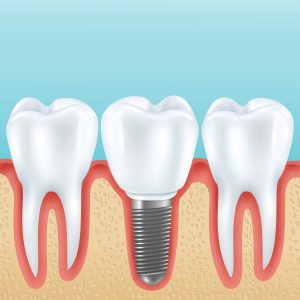Table of Contents
What Is A Root Canal?
Root canals are extensions of the pulp chamber inside the tooth. These extensions run along with the roots of the teeth. While most roots have single root canals, some may have more than one. But in the field of dentistry, a root canal generally refers to the treatment of an infected pulp chamber – root canal treatment or RCT.
The pulp chamber of a tooth is the reason for its vitality. It contains the pulp tissue, nerves, and blood vessels that allow the tooth to grow and develop. Infection or inflammation of this chamber leads to severe pain along with pulp death which renders the tooth non-vital.
A root canal treatment involves removing the infected tissue while preserving the natural tooth structure.
How Long Does A Root Canal Take?

The time taken for a root canal treatment depends on two main factors –
- The number of roots in the affected tooth
- The spread of infection
Root canal procedures usually require one or two visits. The second visit is usually between a week to 3 weeks after your first visit. On average, these visits vary between half an hour to 90 minutes.
The tooth in question also changes the amount of time it takes to complete the procedure.
- Molars are the posterior teeth in your mouth. They take about 90 minutes or more. This is because they have multiple roots (up to 4).
- Premolars are located between molars and anterior teeth. Root canals take about an hour. Premolars usually have one or two roots.
- Canines and incisors are the anterior (front) teeth. Since they have only one root, the procedure takes about 45 minutes to an hour.
Your dentist at Anoka Dental will recommend a dental crown to cover the treated tooth. This may take a little extra time – up to 60 minutes. The dental crown is usually attached in a separate appointment. These are set once the tooth has healed post-procedure.
What Is The Root Canal Procedure?

The RCT process is pretty straightforward and can be done in either one visit or two, depending on the tooth and your dentist. Here’s what you can expect –
- You will be given anesthesia to help you stay calm and pain-free during the entirety of the appointment.
- Your dentist at Anoka will start by drilling a small hole in the affected tooth.
- The pulp chamber and root canals are cleaned using specific equipment. This takes out all of the infected/damaged tissue.
- The inside of the tooth is rinsed several times to remove any debris.
- Your dentist might place medication inside the tooth to kill off any remaining bacteria.
- X-rays are taken to ensure that the root/roots are clean.
- A rubbery material is placed in the canals and sealed.
- If the RCT is done in a single appointment, your dentist will top off the rubbery material with a permanent restoration. If it is done in two, a temporary restoration is placed.
- Your dentist will recall you at a future date to get you fitted for a dental crown. The crown is placed to preserve the structural integrity of the tooth since the removal of the pulp weakens it.
Do Root Canals Hurt?

Contrary to popular opinion, root canals are pretty painless. Since the procedure is performed under local anesthesia, patients feel no pain. Patients might feel slight discomfort but that is far as that goes.
However, different people perceive and tolerate pain differently. Should you continue to feel pain after the anesthesia is administered, your dentist might give you a little more to help.
An RCT helps you get out of pain. The pain associated with this treatment comes from the infected tooth itself. Post-procedure, you should be pain-free.
The American Association of Endodontists states that if you undergo a root canal, you are six times more likely to be pain-free as opposed to when you opt against it.
How Long Does The Pain Last After A Root Canal?

A successful root canal procedure might cause mild pain for a couple of days. This situation is temporary, and the pain should subside on its own, provided you practice good oral hygiene.
If the pain persists longer than three days, schedule an appointment with your dentist to figure out the cause.
Can You Eat After A Root Canal?
For two to three days after the procedure, patients are advised to eat soft foods. Furthermore, avoid foods or drinks with extreme temperatures – not too hot or too cold.
Once you’ve been fitted with a dental crown, you can go back to eating your regular foods.
Can You Drive After A Root Canal?
Most root canal procedures are performed under local anesthesia. This helps numb the tooth and also prevents any pain and discomfort. You should be able to safely drive home or to work after the procedure is complete.
However, if you receive sedation or general anesthesia, you’re going to need a ride home. Confer with your dentist before the procedure starts and it’s best to ask someone to accompany you to the dental office.
Are Root Canals Safe?

If you are someone who has been advised an RCT by your dentist, chances are you’re heard numerous myths – scary ones – surrounding this procedure.
There is no valid scientific evidence that proves that root canals are dangerous or can cause illnesses. Not only is this procedure effective and safe, but it also removes the bacteria from the infected tooth, improving both your oral and general health.
Furthermore, aside from mild ache and sensitivity, there are no other side effects associated with a root canal.
If you are in extreme pain owing to an infected or inflamed tooth and are surfing the web for a “dentist near me”, you’re in luck. Not only does Anoka Dental have a fantastic dental team, but we also service multiple areas in Minneapolis. With a state-of-the-art setup and skilled experts, we promise you guaranteed relief from your dental issues each time you visit. Call (763) 421-4002 to schedule an appointment.




